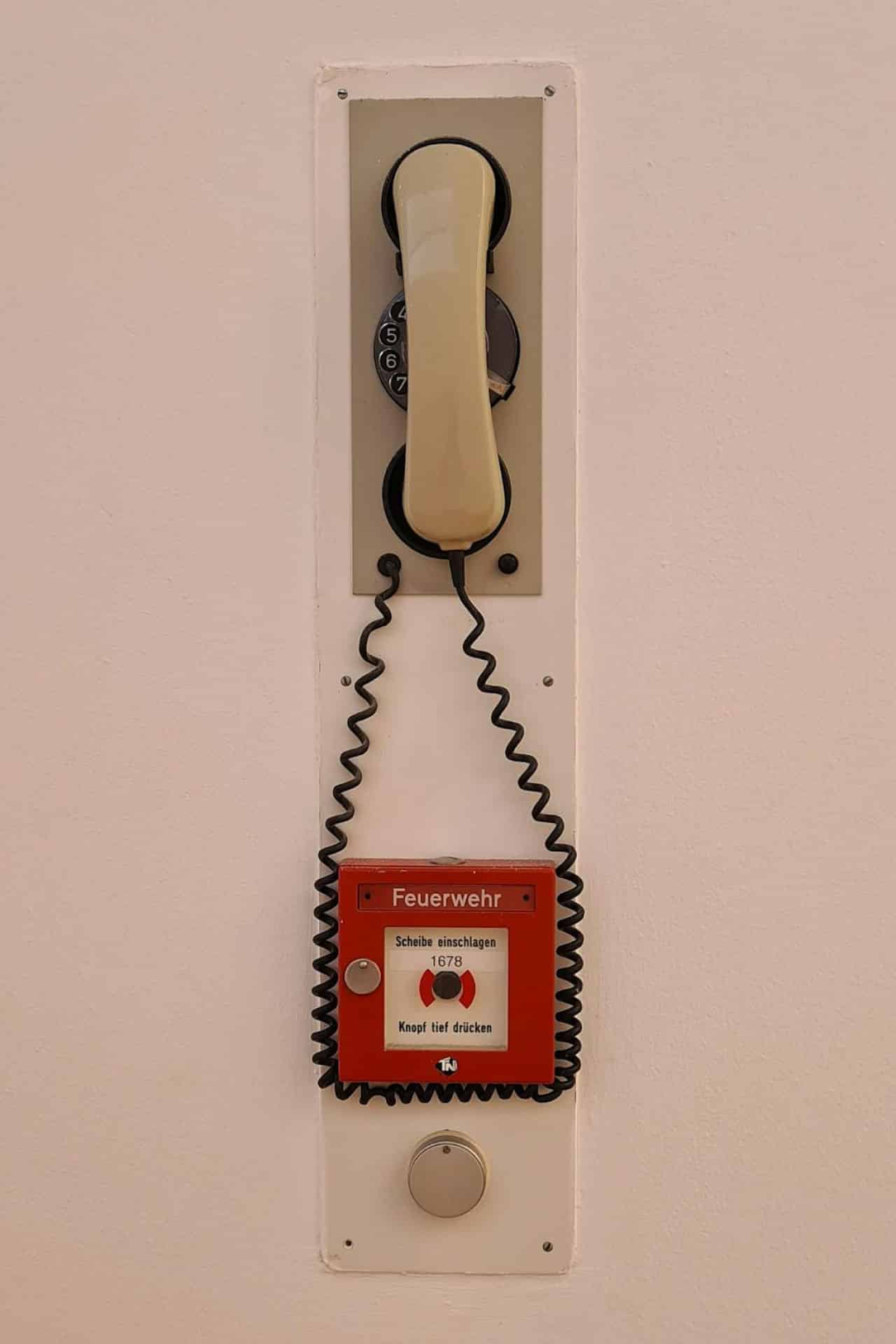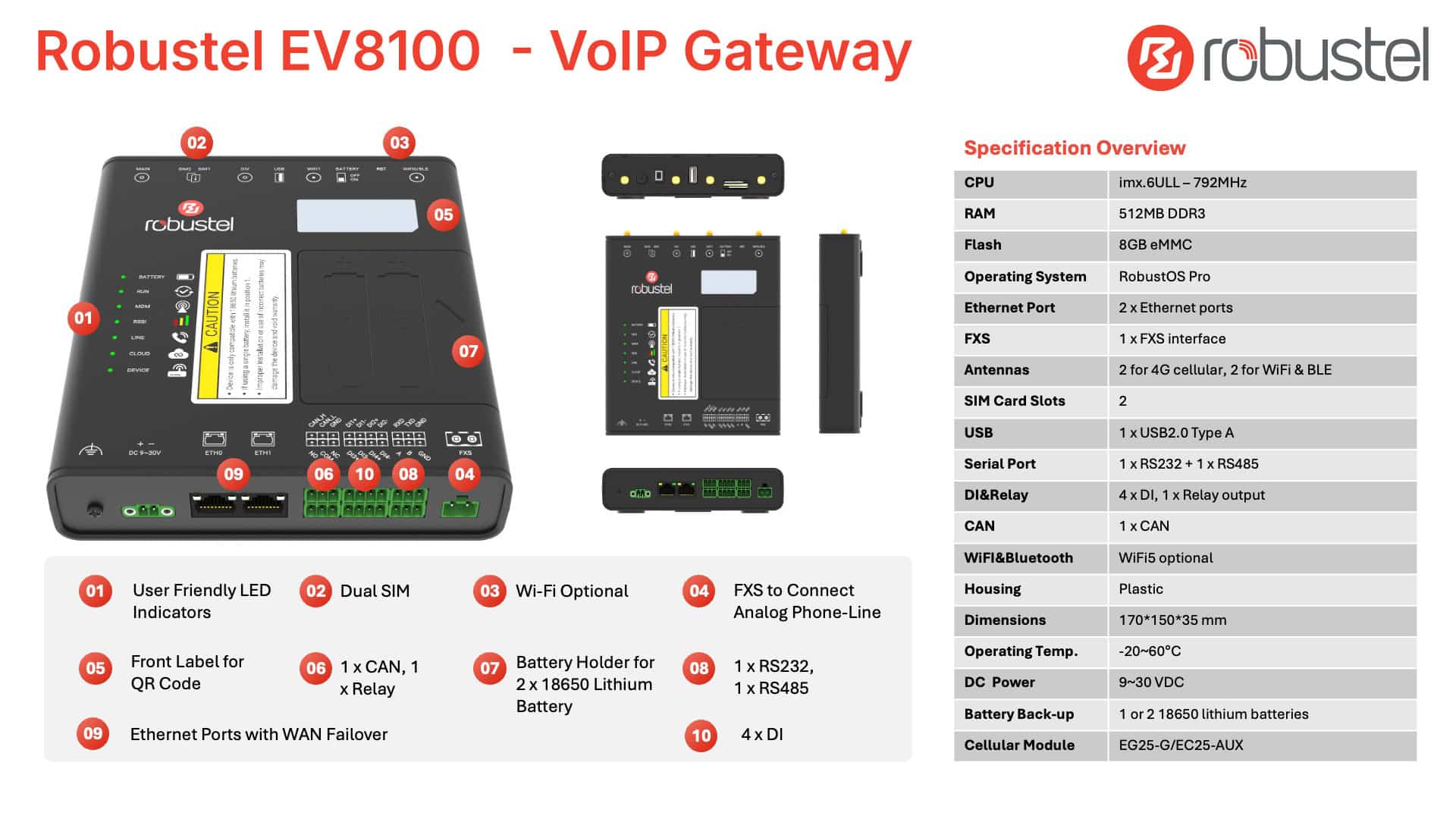
The Global Shutdown of Analog Voice Networks
Across the world telecom providers are retiring the infrastructure that has powered voice communications for over a century. The Public Switched Telephone Network (PSTN) — a global system of interconnected analog voice circuits — is being phased out in favour of modern, digital alternatives.
Within the PSTN, one of the most common services has been Plain Old Telephone Service (POTS) — the traditional copper-based phone line used in homes and businesses. POTS lines have supported everything from desk phones and fax machines to elevator emergency phones, fire alarms, and remote telemetry systems.
As operators shut down PSTN infrastructure, these POTS lines — and the critical equipment connected to them — are rapidly becoming obsolete.

Why It’s Happening: From Copper to IP
The global shift from analog to digital voice networks is driven by several factors:
- Aging infrastructure: Copper networks are costly to maintain and prone to faults.
- Efficiency: Running separate systems for voice and data is outdated. All-IP networks reduce cost and complexity.
- User behavior: Voice calls have moved to mobile and app-based platforms, decreasing reliance on fixed lines.
Replacing the PSTN are digital technologies like Voice over IP (VoIP) — which uses internet connectivity — and Voice over LTE (VoLTE), which delivers voice over 4G mobile data. These technologies offer improved audio quality, increased flexibility, and seamless integration with modern IT systems.
Global Progress: The Shift to Digital Voice Is Well Underway
This transition is not theoretical — it’s already happening. Around the world, legacy systems are being actively retired:
- In Australia, Telstra ceased new ISDN service sales in 2018 and completed its national shutdown by May 2022. The shift is part of the broader National Broadband Network (NBN) rollout, designed to modernize the country’s voice and data infrastructure.
- In the United Kingdom, BT Openreach plans to retire PSTN services by December 2025, requiring businesses to migrate to digital alternatives.
- Germany led much of Europe in this transition, completing its PSTN and ISDN migration to all-IP services in 2020.
- The Netherlands discontinued ISDN services in 2019, encouraging the move to VoIP and mobile solutions.
And this is just the beginning. Many operators are no longer offering new POTS line installations, and support for existing lines is steadily declining. For businesses still relying on analog infrastructure, the message is clear: change is not optional — it’s inevitable.
What’s at Risk: More Than Just Phones
When people hear “landline,” they often think of home phones. But in industrial and commercial settings, POTS lines are still the backbone for thousands of critical systems, including:
- Emergency phones in elevators and lifts
- Fire and security alarm dialers
- SCADA (Supervisory Control and Data Acquisition) systems in utilities
- Healthcare and aged care emergency call points
- Building automation and public safety networks
These aren’t just communication tools — they’re compliance, safety, and business continuity systems. If the analog lines they rely on go dark, entire processes — and lives — could be jeopardized.

Meet the Robustel EV8100: A Digital Voice Gateway for Legacy Systems
To help bridge the gap between analog infrastructure and modern networks, Robustel developed the EV8100 — a rugged, industrial-grade VoIP and VoLTE gateway. It allows legacy devices to continue operating over IP and mobile voice networks without needing a full system replacement.
Whether in a lift control cabinet, a fire panel, or a remote industrial enclosure, the EV8100 provides a reliable, type-certified solution for maintaining voice services after the PSTN is switched off.
What’s Being Switched Off: PSTN, POTS, and ISDN Explained
The global shift from analog to digital voice infrastructure involves retiring several long-standing telecom technologies. While PSTN, POTS, and ISDN are often used interchangeably, each refers to a distinct component of legacy networks. Understanding these systems — and how they’ve supported critical applications — is key to managing the transition.
PSTN: The Backbone of Traditional Telephony
The Public Switched Telephone Network (PSTN) is the global analog voice network built over more than 100 years. It includes the copper cabling, switching exchanges, and signaling infrastructure that connected every landline phone and analog device around the world.
Technically, PSTN is a circuit-switched network, which means it creates a dedicated path between two endpoints during a call. This method was reliable, but inefficient compared to modern packet-switched IP networks that transmit data in flexible, dynamic paths.
The PSTN comprises:
- POTS lines (basic analog voice)
- ISDN services (digital over copper)
- Infrastructure like central offices, exchanges, and copper lines
Why it matters:
For decades, PSTN infrastructure supported not just voice communication, but also machine-to-machine connections like alarm dialers, elevator emergency phones, and telemetry modems in remote industrial equipment.
POTS: Analog Lines in Critical Infrastructure
Plain Old Telephone Service (POTS) is the simplest form of analog telephony — a single voice line running over copper, used widely in homes and legacy industrial systems.
POTS lines continue to underpin many non-conversational but critical services, such as:
- Emergency phones in lifts and elevators
- Fire and security alarm panels
- Remote monitoring systems
- Facility intercoms and call points
- SCADA modems for telemetry in utilities and infrastructure
Because POTS lines are powered from the telephone exchange, they’ve been favored for their independence from local power, especially in emergencies.
What’s changing:
Telcos are retiring copper infrastructure and discontinuing analog line maintenance, meaning systems relying on POTS must migrate to VoIP, VoLTE, or other digital alternatives.
ISDN: A Digital Service Facing Sunset
Integrated Services Digital Network (ISDN) was introduced to improve on analog telephony by offering digital channels over copper lines. While more efficient than POTS, it’s still part of the legacy PSTN ecosystem and is also being decommissioned.
There are two primary types:
- Basic Rate Interface (BRI) – 2 digital channels plus signaling, used for small-scale services
- Primary Rate Interface (PRI) – Higher-capacity lines for aggregated traffic
In the context of industrial and infrastructure use, ISDN BRI/PRI lines were often deployed for:
- Redundant or multi-line telemetry systems
- Security and alarm systems requiring digital redundancy
- Municipal infrastructure with multiple voice or signaling endpoints
Why it matters:
Even though ISDN is digital, it relies on the same aging copper infrastructure and circuit-switched logic as POTS. Many telcos, including Telstra (Australia), Deutsche Telekom (Germany), and KPN (Netherlands), have already completed ISDN shutdowns.
Understanding the Impact on IoT and Emergency Systems
Whether your systems use POTS or ISDN, the critical point is this:
These lines were never just for phones — they’ve been the communication layer for machines, alarms, and control systems.
If you haven’t mapped which devices in your infrastructure rely on PSTN-based voice lines, now is the time. Transitioning to IP-based systems requires not only the right connectivity, but also hardware like the Robustel EV8100 to bridge analog signaling into modern networks safely.
Why It Matters for Critical Infrastructure
The PSTN switch-off isn’t just a telecom upgrade — it’s a compliance and continuity challenge for thousands of critical infrastructure operators.
Across sectors like elevators and lifts, building security, utilities, healthcare, and remote telemetry, legacy voice lines are deeply embedded in daily operations. In many cases, they’re not even labelled as “phones” — they’re emergency buttons, auto-diallers, and control modems.

Bridging the Gap, Not Replacing the System
Most infrastructure owners don’t want — or need — to replace entire systems. Instead, they’re seeking a way to:
- Maintain legacy hardware (e.g. intercoms, modems, autodialers)
- Connect to digital networks (IP or LTE)
- Ensure regulatory compliance for voice-based services
This is where devices like the Robustel EV8100 fit in - A VoIP and VoLTE gateway that translates analog signals into SIP (Session Initiation Protocol) or cellular voice — allowing critical devices to keep working, even after the line goes away. SIP is the industry standard used to initiate, manage, and terminate voice calls over IP networks, making it compatible with modern telecom platforms and hosted voice solutions.
Rather than forcing a full upgrade, they translate analog voice into digital protocols, acting as a bridge between past and future.

The Shift to Digital Voice: From Lines to Packets
As telecom providers retire circuit-switched infrastructure, voice communication is transitioning to IP-based networks. This doesn’t just mean swapping cables — it fundamentally changes how voice signals are transmitted, routed, and managed.
For critical infrastructure operators, the challenge is clear:
How do you maintain the simplicity and reliability of analog systems while adopting the flexibility and compliance of digital voice?
VoIP: Voice Over IP Networks
Voice over IP (VoIP) transmits voice calls over wired or wireless internet connections, using packet-switched technology. Rather than maintaining a dedicated path between two phones (like PSTN), VoIP breaks voice into digital packets and sends them across data networks.
Key traits of VoIP:
- Runs over broadband (fiber, DSL, or fixed wireless)
- Uses the SIP protocol to manage calls
- Integrates with modern cloud-hosted telecom systems
- Ideal for fixed installations where data connectivity is stable
In practice, VoIP allows legacy devices — like analog phones or alarm dialers — to continue operating, provided there’s a gateway to convert signals between analog and IP formats.
VoLTE: Voice Over Mobile Networks
Voice over LTE (VoLTE) is the mobile equivalent of VoIP, delivering voice services over 4G LTE cellular networks instead of older 2G/3G fallback systems. It’s now the standard for mobile voice in most markets.
VoLTE is particularly important in remote or infrastructure-constrained environments where:
- Wired internet is unavailable
- Copper lines have been removed
- Cellular signal is the only viable option
Key benefits:
- Uses the same 4G LTE data network as mobile internet
- Offers high-definition audio quality
- Reduces latency compared to older mobile voice
- Enables voice continuity when fixed broadband fails
Why the Robustel EV8100?
As businesses scramble to replace failing analog infrastructure, not all solutions are created equal. Many “VoIP gateways” on the market were designed for controlled environments — office racks, server rooms, or IT closets. In contrast, the EV8100 from Robustel is engineered specifically for industrial-grade, field-deployed voice applications, especially those tied to compliance and safety.
But what makes the EV8100 stand out isn’t just its ability to replace a voice line — it’s the totality of what it enables.
Voice at the Core
At its heart, the EV8100 is built to bridge analog emergency or telemetry devices to modern IP and cellular networks. With a dedicated FXS port and support for VoIP (Voice over IP) and VoLTE (Voice over LTE), the device ensures legacy equipment like lift emergency phones, fire panels, and medical call systems can continue operating reliably — even after the copper lines are switched off.
Certified for Global Telecom Readiness
The EV8100 has been tested and certified to meet major regional compliance standards — including CE, UKCA, FCC, IC, PTCRB, RCM, TELEC, and JATE. It also supports operation on major networks such as Verizon and AT&T, ensuring telecom safety, emissions, and performance criteria are met for deployments in Europe, North America, Asia, and beyond.

More Than Voice: A Full-Featured Industrial Gateway
Where the EV8100 truly excels is in its versatility. Beyond voice, it’s designed as a multi-function industrial IoT platform, consolidating routing, edge computing, and telemetry into a single, ruggedized unit.
Highlights include:
- RobustOS Pro: A powerful Debian-based OS environment supporting Python, Docker, Node-RED and other custom applications — ideal for local logic, alarms, or edge processing.
- Full Routing Stack: Dual Ethernet ports, firewall, VPN, policy-based routing, NAT, and WAN failover – offering robust backhaul and security for both voice and data.
- Industrial Interfaces: Built-in RS-232, RS-485, CAN bus, and digital I/O, allowing integration with SCADA, PLCs, alarm relays, or elevator controllers.
- Optional Wi-Fi & BLE: Expand deployment flexibility with dual-band Wi-Fi (2.4/5 GHz) and Bluetooth Low Energy (BLE) options for short-range connectivity.
- Remote Device Management: Seamlessly connects to RCMS (Robustel Cloud Manager Service), offering remote monitoring, firmware updates, alerts, and fleet visibility at scale.
A Single Box Solution
Many legacy applications — from building alarms to elevator intercoms — now require multiple boxes to replace what a single analog line used to do. With the EV8100, customers can consolidate voice, routing, I/O, and application logic into one box, one SIM, one management interface.
This reduces not just hardware and cabling, but installation complexity, ongoing maintenance, and total cost of ownership.
Real-World Use Cases & Deployment Scenarios
The shutdown of analog networks is not just a telecom issue — it’s an infrastructure challenge. From building systems to critical industrial applications, many legacy devices still rely on analog lines for connectivity, alerts, and compliance.
The Robustel EV8100 is already supporting over 700,000 elevators globally, and its industrial-grade design makes it ideal for high-reliability use cases where voice lines are still a critical link in the chain.
Elevators & Vertical Transport
Emergency voice communication in lifts is a regulated safety requirement in most regions. As analog lines are decommissioned, building operators face an urgent need to migrate systems without disruptive retrofitting.
The EV8100 provides:
- An FXS port for direct analog phone compatibility
- VoIP and VoLTE backhaul options over broadband or cellular
- Support for EN81-28 compliance and emergency call standards
- Optional DI/DOs for door sensors, alarms, or system status monitoring
This plug-and-play upgrade path keeps elevators compliant and operational, even in older buildings with no internet access.

Fire & Security Alarm Panels
Analog dialers in alarm panels often use contact ID signaling over PSTN. When those lines are switched off, many systems are rendered non-functional — even if the building is otherwise online.
With the EV8100:
- Alarm panels can transmit signals over IP or LTE using voice protocols
- Call routing remains stable without changes to the central station
- Relays and I/O ports support alarm triggers and failover logic
This makes it an ideal retrofit solution for regulated or legacy premises where full system replacement isn’t feasible.

Industrial Telemetry & Remote Access
Many utilities, factories, and infrastructure sites still use analog lines for basic telemetry, alarms, or call-based interactions. Whether monitoring pumps, gates, or unattended equipment, these deployments require rugged, low-maintenance solutions.
The EV8100 enables:
- Serial connectivity via RS-232/485 and CAN
- Integration with SCADA systems and edge compute platforms
- Remote provisioning, diagnostics, and SIM/device management via RCMS
It’s particularly effective in rural or edge environments where fixed-line internet isn’t available — but uptime and compliance are still critical.

A Smart Migration Opportunity for OEMs, Infrastructure Suppliers & System Integrators
As the global PSTN shutdown accelerates, many analog-dependent systems are being left behind. This shift presents a rare opportunity for solution providers to lead digital voice migration — not just react to it.
The Robustel EV8100 is already supporting hundreds of thousands of deployed systems worldwide, and its flexible architecture makes it uniquely suited for adaptation, bundling, or integration by industry partners.
OEMs: Customise with Confidence
For Original Equipment Manufacturers (OEMs) whose products rely on analog connectivity — from lift control panels to alarm systems — the transition to digital voice poses both risk and opportunity.
The EV8100 isn’t just a standalone product — it’s a proven hardware platform that Robustel can customise or embed to meet OEM-specific needs.
- Built on a modular architecture with RobustOS Pro and rich I/O
- Customisable firmware, branding, and enclosure options
- Backed by Robustel’s own smart factory in Guangzhou, with ISO-certified production
Let us help you re-engineer legacy products for the digital age — without starting from scratch.
Infrastructure Suppliers: Add Value to Voice Networks
For companies deploying or supporting telephony infrastructure — such as PABX systems, SIP servers, and enterprise voice solutions — the EV8100 represents a natural extension of your offering.
Whether you’re delivering campus-wide voice upgrades, replacing analog intercoms, or enabling IP migration for remote buildings, the EV8100 helps your customers maintain compliance and continuity without needing full system replacement.
- Drop-in compatibility with legacy analog voice equipment
- SIP and VoLTE support for modern network backhaul
- Certified for use across global markets
You’re already managing the network — now you can secure the last mile of voice.
System Integrators: Lead the Migration from the Field
For system integrators — especially those in building automation, security, transport, or industrial control — the PSTN shutdown presents a high-stakes transition moment.
The EV8100 allows you to:
- Deploy compliant voice services without relying on fixed lines
- Consolidate routing, voice, I/O, and logic into a single device
- Manage everything remotely via RCMS
- Scale from pilot to fleet-wide rollouts, even in harsh or remote sites
With a rugged design, smart OS, and voice-first capability, the EV8100 gives integrators a competitive edge as customers modernise their infrastructure.
Ready to Lead the Migration?
The global switch-off of analog voice networks is already underway. From the UK to Australia, from telcos to infrastructure owners — the clock is ticking for any system still dependent on PSTN or POTS lines.
The Robustel EV8100 offers a simple, scalable, and globally certified way to extend the life of essential systems — while bringing them into the digital age.
Whether you’re a product manufacturer, an infrastructure partner, or a frontline systems integrator, you don’t have to reinvent your solution — you just need the right gateway.
Let Robustel help you:
- Extend your product roadmap without hardware redesign
- Deliver compliant digital voice for your customers and clients
- Protect critical infrastructure through a smart, rugged platform
Get in touch today to discuss EV8100 integration, pricing, or technical support.

